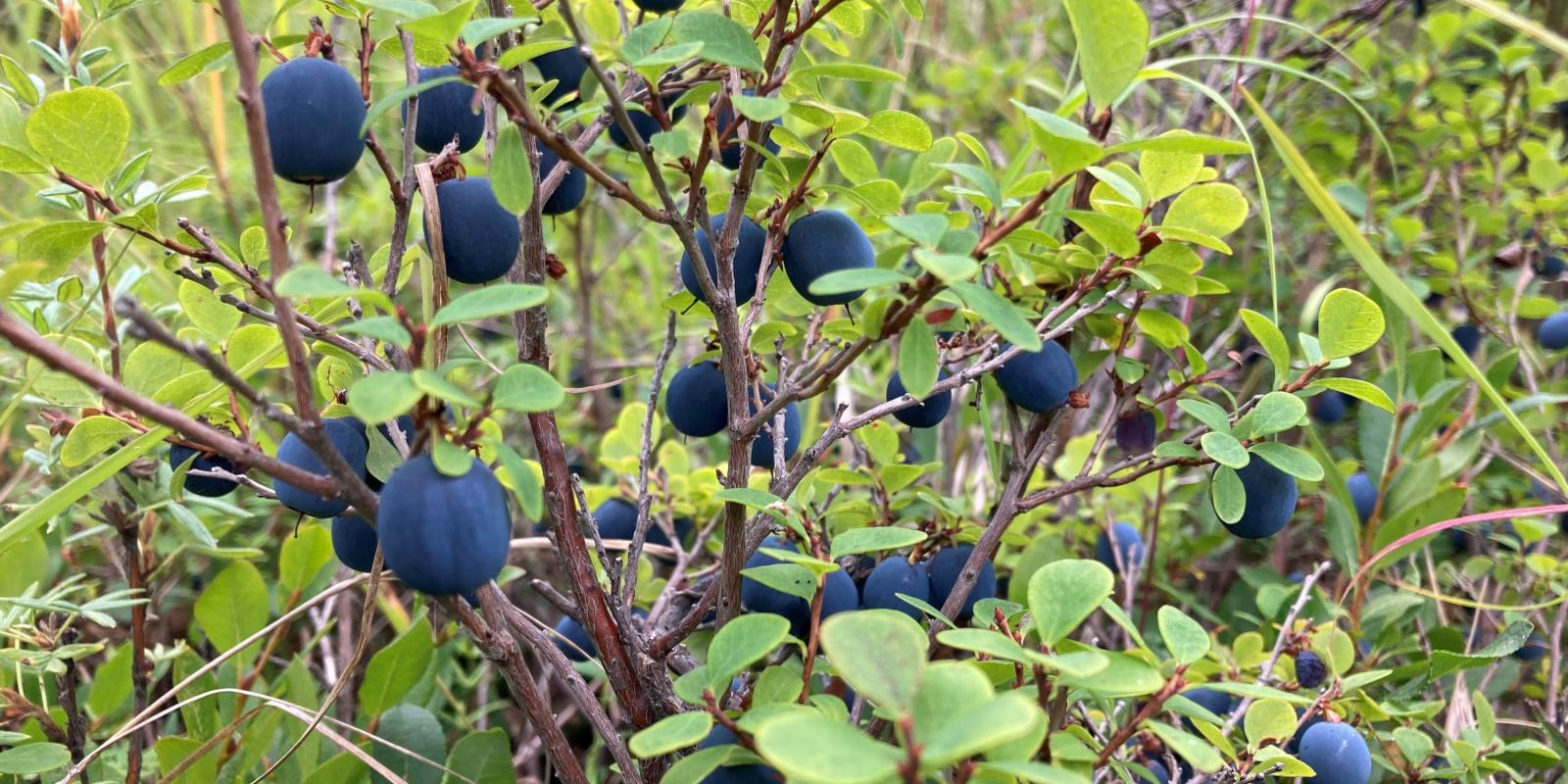I am an indigenous chef instructor from the Deg’itan Athabascan tribe in the interior Alaska villages of Shageluk, where I was born, and Grayling, where I grew up. I promote organic, traditional and local food in contemporary recipes adapted to be gluten and dairy free. My family instilled in my siblings and me a resolve to gather wild berries and cherish traditional food as gifts.
Changes I have seen due to climate change have become noticeable in the past two to three years. There were changes in previous years, but they became most notable the past two summers. Winters have become colder where I live in Wasilla, Alaska. We’re experiencing longer lasting negative temperatures and temperature fluctuations of 50 to 60 degrees, as well. In the past two winters, we experienced snow accumulation in feet versus inches, and there was more snow than I had ever seen.
The gathering of traditional foods is becoming more difficult with this constantly changing climate and it will affect our health. We can look at our own history, before climate change, as in the past 40 to 60 years, Native people moved into urban areas and stopped or decreased hunting and gathering habits. Diabetes developed into an epidemic likely from eating a diet of prepared and fast foods. People converted in short order from a traditional food diet to what might be called an American diet of foods already prepared high in salt, unhealthy fats and sugar. Traditional food was mostly out of the picture and not consumed on a regular basis. Grocery stores were just a short drive away, so there was no need to walk so much anymore.
Climate Impacts on Native Foods
It’s my opinion that because of the snow accumulation changing throughout the winter, due to drifting snow from high winds (which also are more frequent), the melting affects the wild berry growth much more than people realize. In the summer of 2022, blueberries, low-bush cranberries and crowberries ripened at least two weeks later than usual.
But, in the summer of 2023, I could not find any ripe blueberries in late July, at their expected time of harvest. I searched hillsides where I usually picked blueberries and found smaller green blueberries in mid- to late August. I picked fewer, smaller blueberries in September but they were not as plentiful as they had been in previous seasons.
‘I believe our traditional food is medicine.’
The low-bush cranberries finally ripened in October, but more than half had to be composted due to over ripeness. Probably a combination of under ripeness and cold. Crowberries seemed to weather the changes well. I don’t pick crowberries as much as the other berries but I do sample mouthfuls and observe how they are faring.
Now our Native people who depend upon wild berries will likely have to travel further to harvest them as some areas may be completely barren of berries. Calculating when and where the berries will be ready for harvest with climate change will be a new challenge. We first need to learn when berries are close to ripeness before driving a few hundred miles to harvest them.
The U.S. Fish and Wildlife Service and the Yukon River Fishery Management team recognized that within the past three years there has been no subsistence fishing of chinook and summer chum, and, within four years (as of 2023) no fall chum fishing on the Yukon River. Summer 2024 will mark five years of no subsistence fishing on the Yukon River.
Just recently, my mother’s smokehouse caved in from four years of no use. Usually, repairs could be done on it in the summers but because there was no salmon, no repairs were made. One bright spot is the moose population, as they have been faring better.
Sadly, the Wood bison herd reintroduced in 2015 to the GASH (Grayling, Anvik, Shageluk, Holy Cross) villages have experienced several catastrophic events, from icing in the winters to springtime floods lasting weeks, both of which affected their winter and spring foraging. Their numbers have dropped from starvation and no harvest is planned. Local bison had been living in this area of Alaska more than a hundred years ago but have disappeared. No information is available as to why they vanished. The reintroduced bison were proposed years ago to supplement a possible future decline of moose.
Today climate change has and will continue to increase the challenges of obtaining traditional foods. Wild berries have stopped growing in some areas, are smaller in size, and the window for harvesting is shorter, sometimes only a few days as the winter’s cold freezes berries just beginning to ripen enough to pick. People will lose their resolve to harvest after not finding wild foods where they used to be plentiful. As people instead depend upon cheaper, super processed foods, obesity will continue to rise.
As moose and fish become threatened, we appreciate them even more. I believe our traditional food is medicine. I can be certain that we as indigenous people will begin or carry on growing our own food as my mother has for the past 60-plus years. My sister and I will continue to travel hundreds of miles to gather wild berries. I cannot imagine a time of not picking wild berries. It is part of who we are as Indigenous people. I would like to think we will become more knowledgeable about food and make better choices in the future.
Flora Deacon is a member of the Deg’itan Athabascan tribe in interior Alaska. She is a chef instructor with 13 years’ experience cooking for seasonal and temporary contracts in Alaska and Antarctica, seeking to empower and teach interested clients one-on-one, hands-on cooking skills that will help them achieve healthy eating habits, learn up-to-date nutritional requirements and more importantly, to feel good about themselves.













